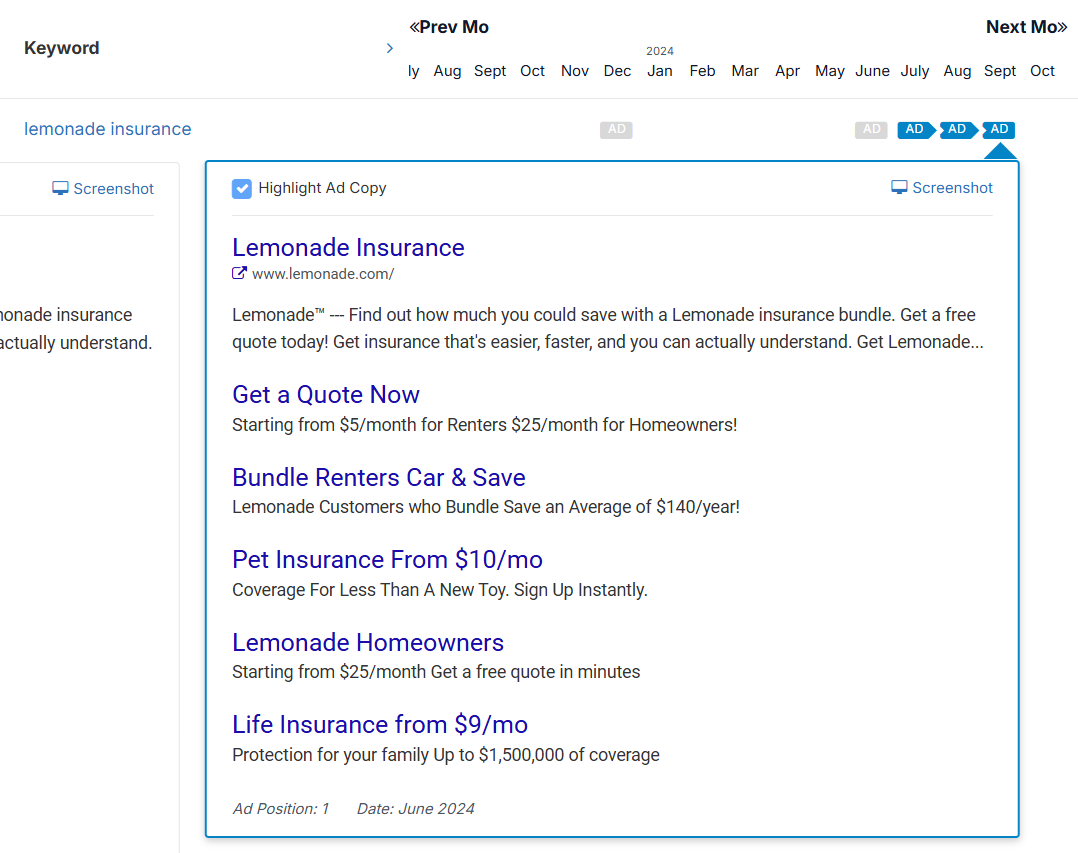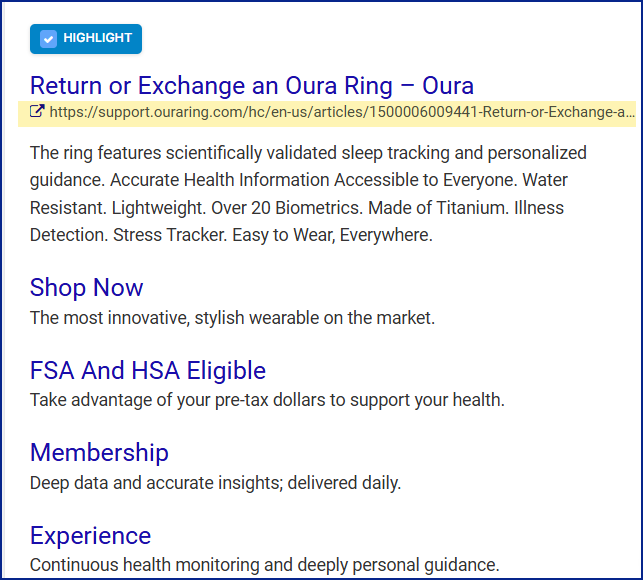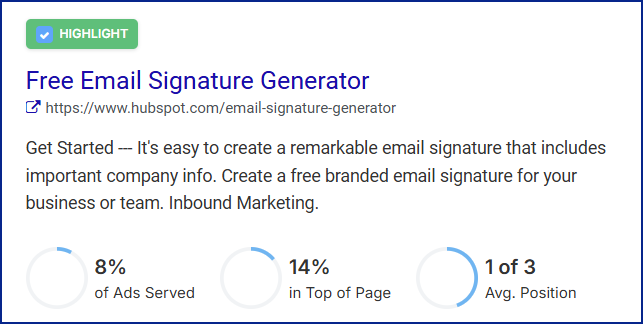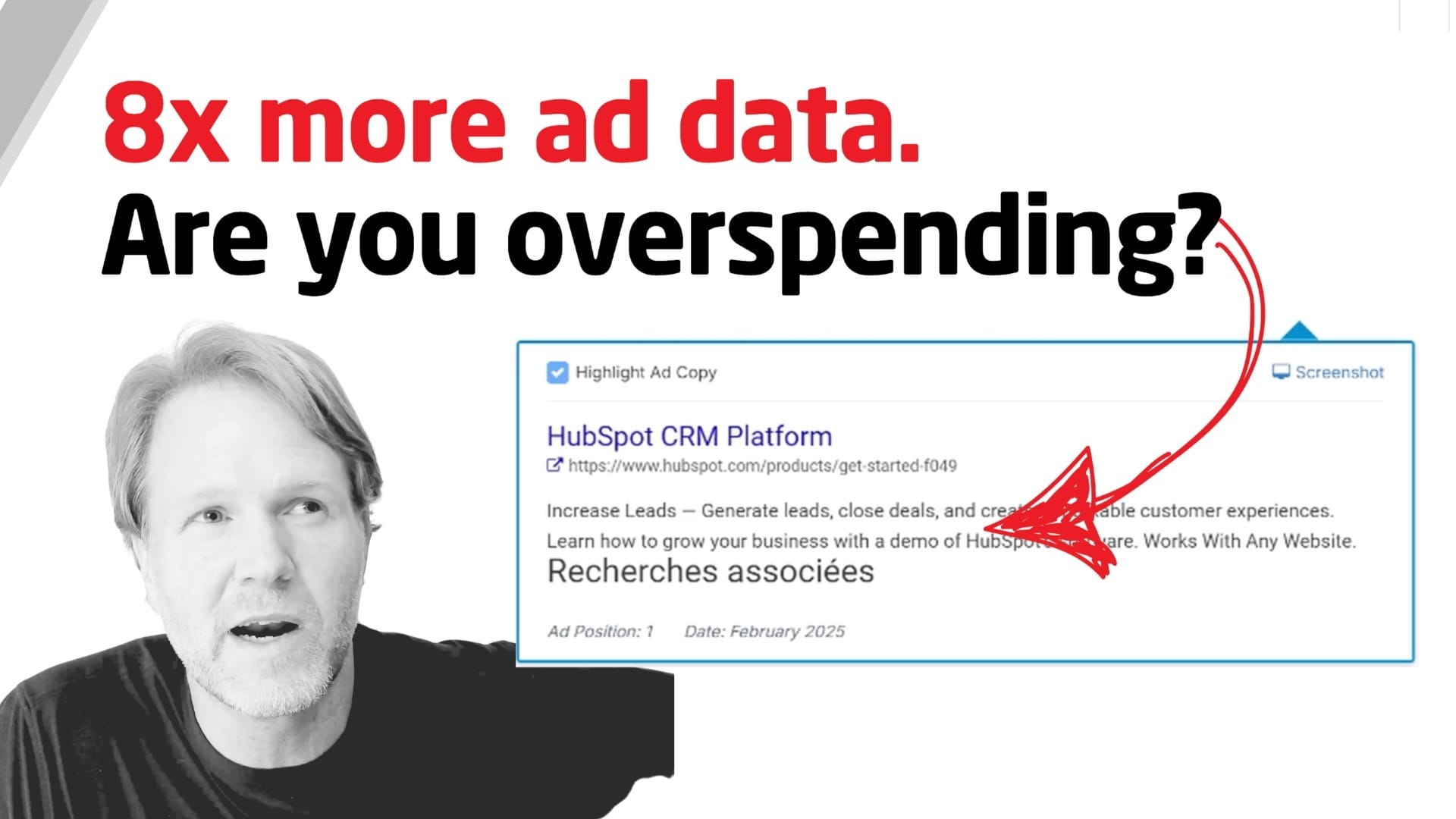You’ve been able to dig into your competitors’ Google Ads with SpyFu, but this newest update to Ad History loads it with upgrades across the board.
Watch this video to see how the new Ad History delivers best-of-class PPC research, and stick around to see how it uncovered a major advertiser's big misstep.
Ad History creates a clever way to reveal international ad mistakes. Watch for that in the second half.
We’ve massively expanded what you can see—more paid keywords per domain, countries, ad creative, and even…landing pages. (You knew that had to be coming!) We've been dying to bring you this update, and it's making Ad History out to be one of SpyFu’s most powerful features.
Here’s what’s new:
4x to 10x More Ads Per Domain
When we say that we've expanded Ad History, it's by orders of magnitude. You’ll see four to ten times more ads per domain than before. That includes every variation and split test across years of campaigns. If your competitor has ever run it, you can see it.
How are there more ads?
For example, take a domain like HomeDepot.com. Previously, you might have seen around 20,000 ad records. Now, you’ll see over 100,000. Those extra ads give you far more context. You can trace the evolution of their seasonal promotions, branded product pushes, and even how their messaging shifted in response to competitors or economic events.
It’s a full campaign archive—going back to 2007—with each variation linked to the keyword it served on and the SERP it appeared in.
The reason we're able to share more ads is that SpyFu has been expanding keyword search data rapidly, and we are finally able to carry that data over into Ad History. That brings more consistency from one SpyFu feature to another.
Now, Ad History connects better to other parts of SpyFu in overall PPC roll-ups and a website's individual paid keyword details. This new paid keyword data gives you smoother transitions from one SpyFu tool to another, and it offers a more accurate picture of what a domain has been doing in Google Ads.
Full Ad Copy and Landing Page URLs
Before, we showed just the top few lines of ad copy. Now you get the entire ad and its landing page URL. These round out two of our most requested features, and they're finally live.
The full ad view is more important than ever now that more advertisers have put Google Ads extensions into wider use.

Now you can see the full headline, description, extensions—and exactly where that click is going. Are they sending traffic to a clean, conversion-focused landing page? A broader homepage? Maybe they are promoting clicks through to an article on their blog. That context gives you valuable information about why they are advertising and what they hope to get from their ads.

As is the core of Ad History, you can track how that creative evolved over time. That hasn't changed. However with more details in the ads and more ads themselves, you have a stronger view of how their campaign has evolved. This is a quality upgrade, where you have a truer and more accurate understanding of the advertiser's messaging.
It's helpful for dissecting funnels, analyzing A/B tests, or just getting inspiration for your own campaigns.
Global Coverage Beyond US + UK
We now track ads in every country that SpyFu supports. That includes markets like France, Sweden, Portugal, Brazil, and even Ukraine. You can explore ad history in your clients’ local markets or expand globally with real competitor data.
Let’s say your agency is pitching a client with operations in both the U.S. and Europe. You can now walk into the meeting with side-by-side ad histories—one for their U.S. competitors and another showing what’s happening in France or Germany. It’s hard proof of what messaging works where, and where their competitors are falling short.
We’re adding new countries at a rate of two per month, so the data just keeps growing (and with that, so does your reach).
Real-Time Ad Tracking
Maybe one of the biggest surprises for past SpyFu users--this isn’t tied to a monthly batch data anymore. Our ad data is practically live. SpyFu’s upgraded data collection systems now process up to 1,000 SERPs per second. That's a big change for the better. Ad History updates constantly, so you get fresh insights every time you log in.
That means if a competitor launches a new ad today, there’s a good chance you’ll see it in SpyFu tomorrow. It also means you can monitor changes in near real-time. For PPC managers running high-stakes campaigns, this gives you a crucial advantage—you’re no longer reacting weeks later.
See Winning Ads at a Glance
Some features help you see which versions have been most dominant. With a strong advertiser, that also signals "most successful."
Ad History has always been a visually-forward tool. Our color coding tracks ad variations. (Basic idea: a red highlighted ad uses different copy than a violet highlighted ad.) That helps you to spot repeated ads on the same keyword and ads that pop up from one keyword to another. It uncovers a tactical clue about your competitors--their most trusted, most dominant messaging.
The Top Ads side panel breaks gives you that information in reverse. You can read the different ad variations--with the landing pages they used--and see how often they've run compared to the site's other ads. For example "13% of ads run" could be a stronger ad if the other top ads are coming in closer to "4% of ads run." You can click the ad to see which keywords triggered it and when.

Put This Information to Use
Let’s say you’re researching ads for a CRM product. You can look at HubSpot’s ad variations and immediately see which version ran for six months straight, serving on 80% of relevant impressions. That’s the winner—and now you know what kind of language, offer, and structure they leaned on.
Use it to:
- Build your own variations based on proven winners
- Spot offers your competitors doubled down on
- Identify weak spots in their messaging lifecycle
Proof with a Screenshot
Every ad in Ad History is linked to a real SERP screenshot. If you need to show a client proof of what their competitor is running—or how they’re wasting money—you’ve got it.
Tip: If you're having trouble seeing the screenshot, turn off your ad blocker.
This is especially valuable in pitch decks or reports. Maybe your prospect is skeptical that their top competitor is still running generic search ads with no call to action. You can show them the ad. Show the date. Show the full SERP, complete with other competitors doing it better.
An Unexpected Trick: Uncover Costly Mistakes
This international ad data turned out to reveal a pretty costly error. Audiences want ads that speak to them. We pour hours into testing headlines and offers that convert. That's what makes it so unusual that a major advertiser would send English ads to non-English audiences.
Case in point: HubSpot. In the US, their Google Ads are dialed in. But in France, Germany, and Ukraine, they’re running English-language ads on Google.fr, Google.de, and Google.com.ua.
Meanwhile, their competitors are running fully localized campaigns. That kind of mismatch can waste millions in ad spend.
And it's not even a theoretical example. The proof is right here! You can see the actual SERP where HubSpot’s English ad is sitting next to French-language competitors. Yeeouch!
But we're not here to call them out. It's more valuable to turn that into a lesson for yourself or your clients. Double check your own campaigns:
- Flag costly mistakes before they go too far
- Win clients by identifying how they’re overspending
Localization mistakes happen fast and quietly. Ad History makes them loud and obvious.
No Better Option for Competitive Google Ads Intelligence
These robust details add up to actionable, insightful, competitive PPC research that updates in real time. Combine that with the fact that SpyFu leads other tools in keyword depth, and all of this makes SpyFu the most comprehensive source of Google Ads data on the market.
If you want to:
- Audit your competitor's PPC strategy
- Improve your own campaign structure
- Uncover global expansion opportunities
- Back up every finding with visual proof
Ad History is where it all comes together.

